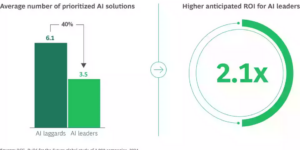 When the dust settles—and water recedes—following 2017’s hurricanes, wildfires, and other catastrophes, domestic primary insurers will learn if, and how much, their own underwriting discipline will shield them from almost certain hikes in rates for reinsurance renewals come January 1, a panel of reinsurance expects said recently.
When the dust settles—and water recedes—following 2017’s hurricanes, wildfires, and other catastrophes, domestic primary insurers will learn if, and how much, their own underwriting discipline will shield them from almost certain hikes in rates for reinsurance renewals come January 1, a panel of reinsurance expects said recently.
Reinsurer representatives offered differing perspectives on these storms and what lies ahead for their industry during a panel discussion at the Property Casualty Insurers Association of America annual meeting on Oct. 17 in Chicago.
Brian Quinn, Odyssey Re’s CEO for North America, laid out the situation facing U.S. insurers and reinsurers in the wake of this year’s catastrophes.
“In the last quarter, we have upwards of $100 billion that could be leaving our industry,” he said. “It’s hard to see how that reduction in capital in such a brief period could lead to anything other than meaningful changes in rates.”
Besides the monetary loss, the reinsurance industry learned that its catastrophe models were subject to much greater degrees of uncertainty than previously anticipated, Quinn said, adding that, “uncertainty increases the cost of capital.”
“While specific company programs are going to be decided on their own merits,” he continued, “you can safely assume that the price of capital, generally speaking, has to rise.”
“Basic economics” call for a change in rates, said Steve Levy, Munich RE America’s reinsurance president.
“There’s a good chance that the accumulated losses for the reinsurance industry will wipe out three or four years of underwriting profit for the global reinsurance industry,” he said. “It would take a double digit rate increase just to get the reinsurance sector’s ROE to a level close to its cost of capital.”
Jame Kent, Willis Re’s global deputy CEO and president for North America, observed that, “we’re in a different industry today.
“There has been a run of large catastrophe events but it’s not just cat losses,” he noted. “I think the industry is asking itself: ‘Are we getting an adequate return for our risks?’ There’s a need to look at our entire portfolios of risk, insurance and reinsurance business, and assess where we’re being paid properly.”
More Than Just Recent Catastrophes Is at Play
Panelists were quick to emphasize, however, that primary cedents were not entirely at the mercy of a catastrophe-stricken reinsurance sector.
“[The recent catastrophes] are largely an earnings event for the industry,” Kent said “They’re not capital erosion events. At this point, reinsurers can renew what they’ve got in place now and have the capital to support that.”
“We’re telling our clients not to overreact,” said Eric Anderson, CEO of Aon Benfield. “They should step back, take look at their own business, take a look at their portfolio, look at their strategy and engage with their reinsurers about their individual needs.”
“The big measuring stick is how well you (a ceding company) performed against your expectations,” said Tony Rettino, founding principal of Elementum Capital. “If we have insurers that did well [against expectations] but took a loss, we’ll probably give them the benefit of that.
“What we’ve missed [as an industry] for the last four or five their years is the differentiation by quality of [ceding] companies. That will hopefully be coming back.”





















 Rising Civil Unrest, Political Violence Remain Top 10 Risk for Global Businesses: Allianz
Rising Civil Unrest, Political Violence Remain Top 10 Risk for Global Businesses: Allianz  2024 Second on Record for Most Tornadoes in the U.S. in a Year
2024 Second on Record for Most Tornadoes in the U.S. in a Year  AM Best: Tariff Uncertainty Could Lead to Credit Rating Changes for Insurers
AM Best: Tariff Uncertainty Could Lead to Credit Rating Changes for Insurers  U.S. P/C Industry Combined Ratio Headed Back Up to 100: S&P Ratings
U.S. P/C Industry Combined Ratio Headed Back Up to 100: S&P Ratings 













